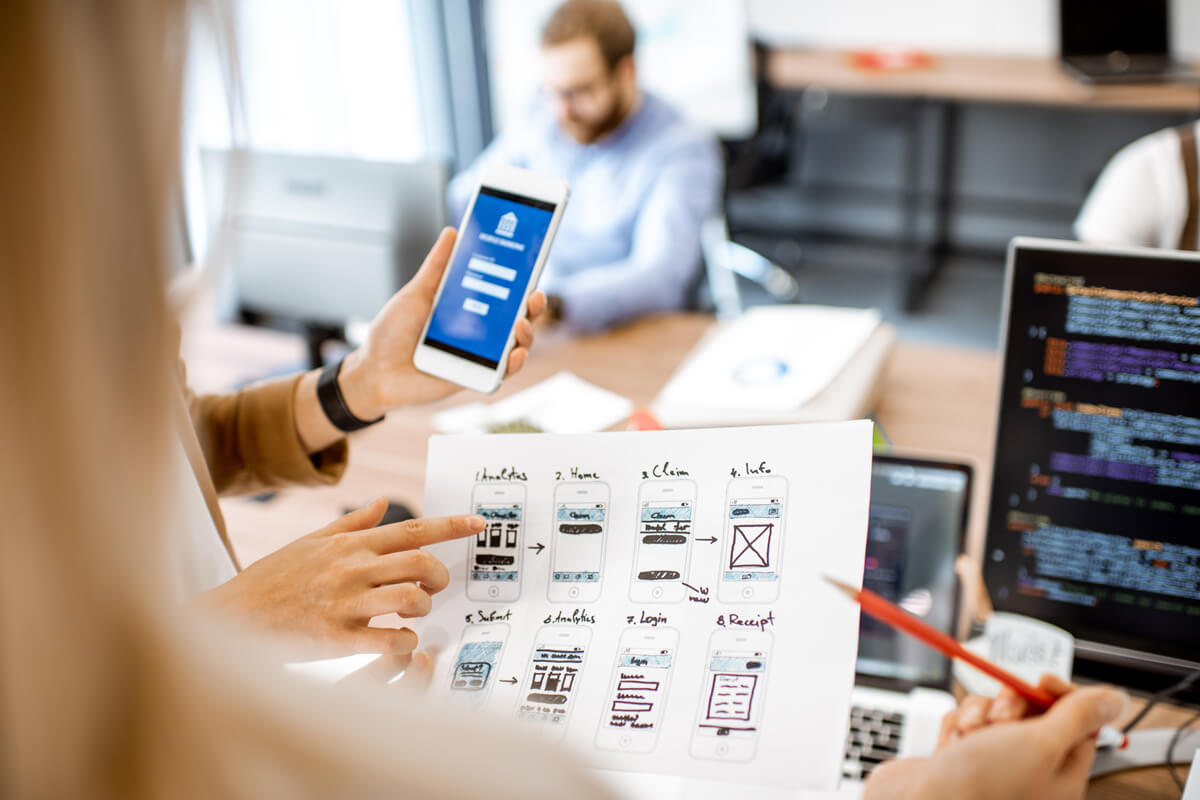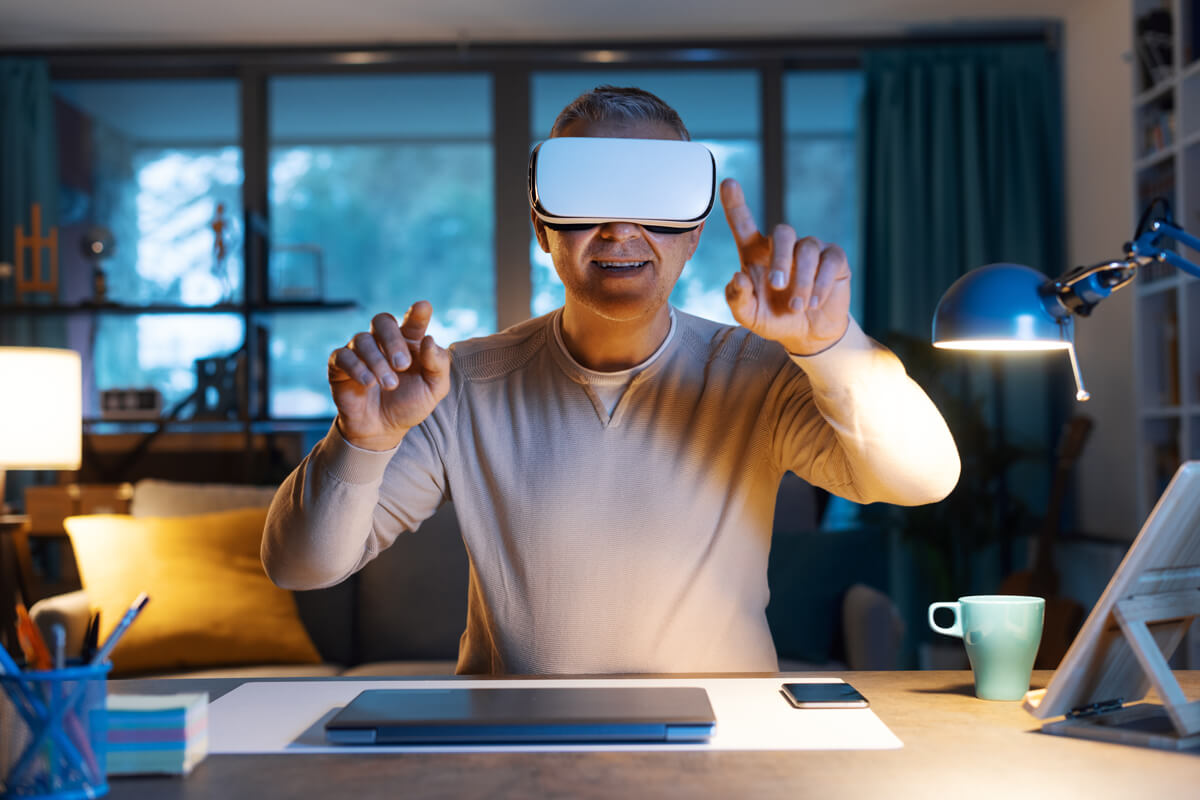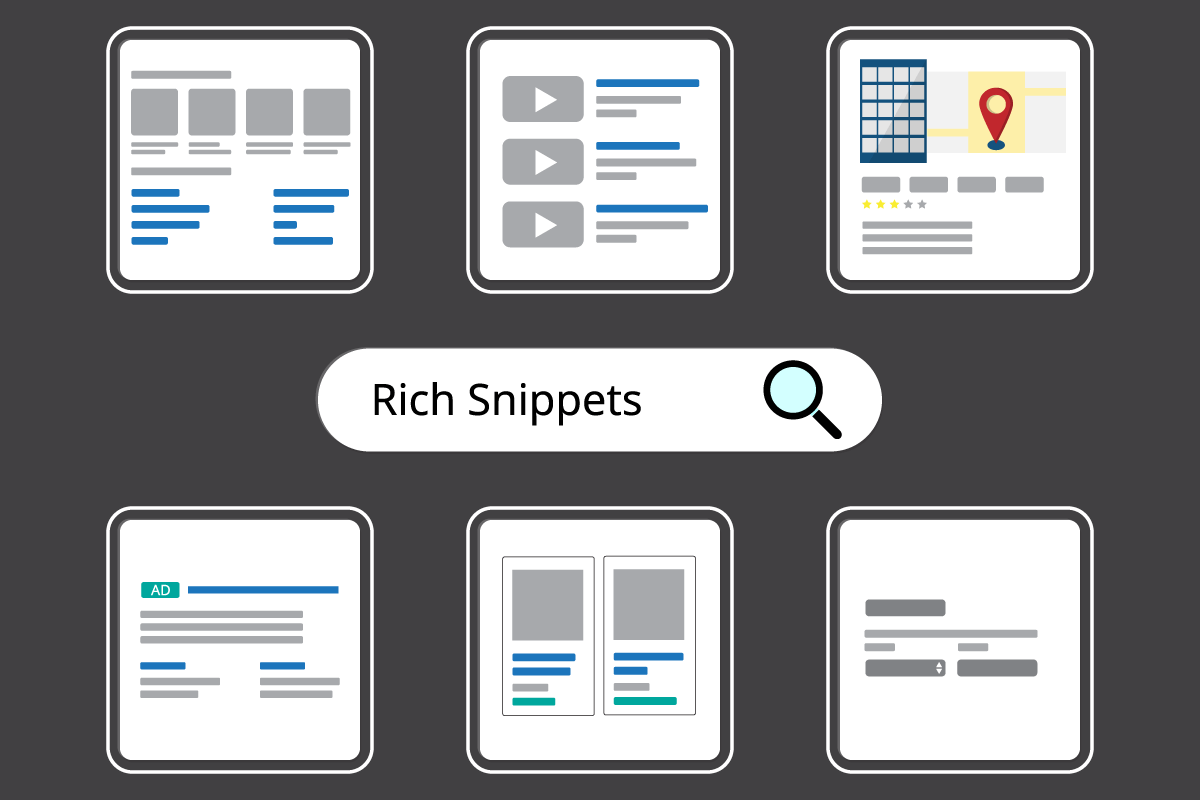As a web designer, staying informed about the latest technologies is crucial. The industry is constantly changing, and the tools and technologies you use today could quickly become obsolete. In this article, I will examine how recent web design technologies are revolutionizing the field and what you must understand to keep up with the latest trends.
What is web design technology?
Web design technology covers various tools, processes, and technologies used in developing websites and applications. This includes web development languages like HTML and CSS, content management systems like WordPress, and design tools such as Adobe Photoshop. It also involves coding and scripting languages like JavaScript and PHP, which are used in creating dynamic websites. As the web design technology landscape is ever-changing, with new tools, technologies, and processes being developed regularly, it can be challenging to keep up with the latest trends. Therefore, web designers must remain informed and knowledgeable about the latest web design technologies.
Trends in web design technology
Web design technology is seeing a significant trend with the integration of artificial intelligence (AI). AI is being leveraged to automate the mundane and time-consuming tasks related to web design such as creating wireframes, prototypes, optimizing images, and coding. It is also being used to enhance user experience by providing personalized content and recommendations based on their browsing history. Another emerging trend in web design technology is the use of virtual reality (VR). This technology is being utilized to create immersive web experiences that can be accessed on multiple devices including smartphones, tablets, and VR headsets. With VR, users can explore a website in a 3D environment, resulting in interactive and captivating experiences. Staying updated with these trends and technologies is essential for web designers to create modern and cutting-edge websites.
Artificial Intelligence (AI) in web design
The use of AI in web design is increasing efficiency and effectiveness in various ways. AI-based tools can automate tedious tasks like coding, writing, and optimizing images. AI can improve the user experience by offering personalized content and recommendations tailored to user behavior. Furthermore, AI can create interactive experiences on websites by powering chatbots for customer support and providing dynamic and engaging content, such as automated surveys and customized product suggestions.
Virtual Reality (VR) in web design
Virtual reality (VR) has emerged as a popular web design technology that enables users to explore websites in 3D environments, resulting in immersive and engaging experiences. VR technology can be utilized to develop virtual tours of websites that allow users to navigate through different sections of a website in an interactive manner. Moreover, VR can be leveraged to develop interactive games and simulations that educate users about a product or service. This provides users with an immersive experience that surpasses traditional web design.
Web design technologies and their impact on UX/UI
User experience (UX) and user interface (UI) design are critical components of web design that focus on creating websites and applications that are easy to use and navigate. While UX design concentrates on how users interact with a website or application, UI design concentrates on how the website or application appears visually to users. Advancements in web design technologies are transforming the fields of UX and UI design. For example, AI-powered tools can personalize the user’s experience by providing recommendations or conducting surveys, making the user’s journey smoother. Additionally, virtual reality (VR) can be used to create immersive experiences, further improving the user’s interaction with the website or application.

Web design technologies for mobile devices
The significance of mobile devices in web design is continuously growing. With more and more people accessing websites and applications through smartphones and tablets, it’s imperative for web designers to create websites and applications that are optimized for mobile devices. Fortunately, the latest web design technologies are simplifying the process of designing mobile-friendly websites and applications. AI-powered tools can now automate time-consuming tasks such as coding, writing, and image optimization, while VR can create engaging and interactive experiences for mobile users.
Open source web design technologies
Open source technologies are gaining traction in the field of web design due to their free availability and ability to create tailored websites and applications. They offer greater reliability and security as they are maintained by a vast developer community. Moreover, these technologies can enable the creation of compelling user experiences. AI-powered tools can automate tasks such as creating personalized product recommendations and surveys, while VR can offer immersive and interactive experiences.
Courses for web design technologies
In order to keep up with the latest web design technologies, there are numerous courses to choose from. There is various courses available on web design technologies, including short online tutorials to comprehensive degree programs. Most of these courses are available online, which enables you to study and learn at your own pace. Enrolling in a course is an excellent way to gain an in-depth understanding of the latest web design technologies and learn how they can be used to create immersive and interactive user experiences. Furthermore, these courses can provide valuable insights into the current trends in web design and how they are influencing the industry.
Conclusion
The web design industry is constantly evolving, and it’s crucial for designers to keep pace with the latest trends. This blog post delved into how the latest web design technologies are revolutionizing the field and what you should know to stay on top. We covered a range of trends, including artificial intelligence (AI) and virtual reality (VR), and their use in developing more efficient and effective websites and applications. We also looked at open source technologies and courses available for web design technologies. As a web designer, it’s vital to keep yourself updated with the latest web design technologies to stay competitive in the industry. With the proper understanding and tools at your disposal, you can remain at the forefront of the industry and provide your users with compelling and interactive experiences.
Table of Contents
Share on
As a web designer, staying informed about the latest technologies is crucial. The industry is constantly changing, and the tools and technologies you use today could quickly become obsolete. In this article, I will examine how recent web design technologies are revolutionizing the field and what you must understand to keep up with the latest trends.
What is web design technology?
Web design technology covers various tools, processes, and technologies used in developing websites and applications. This includes web development languages like HTML and CSS, content management systems like WordPress, and design tools such as Adobe Photoshop. It also involves coding and scripting languages like JavaScript and PHP, which are used in creating dynamic websites. As the web design technology landscape is ever-changing, with new tools, technologies, and processes being developed regularly, it can be challenging to keep up with the latest trends. Therefore, web designers must remain informed and knowledgeable about the latest web design technologies.
Trends in web design technology
Web design technology is seeing a significant trend with the integration of artificial intelligence (AI). AI is being leveraged to automate the mundane and time-consuming tasks related to web design such as creating wireframes, prototypes, optimizing images, and coding. It is also being used to enhance user experience by providing personalized content and recommendations based on their browsing history. Another emerging trend in web design technology is the use of virtual reality (VR). This technology is being utilized to create immersive web experiences that can be accessed on multiple devices including smartphones, tablets, and VR headsets. With VR, users can explore a website in a 3D environment, resulting in interactive and captivating experiences. Staying updated with these trends and technologies is essential for web designers to create modern and cutting-edge websites.
Artificial Intelligence (AI) in web design
The use of AI in web design is increasing efficiency and effectiveness in various ways. AI-based tools can automate tedious tasks like coding, writing, and optimizing images. AI can improve the user experience by offering personalized content and recommendations tailored to user behavior. Furthermore, AI can create interactive experiences on websites by powering chatbots for customer support and providing dynamic and engaging content, such as automated surveys and customized product suggestions.
Virtual Reality (VR) in web design
Virtual reality (VR) has emerged as a popular web design technology that enables users to explore websites in 3D environments, resulting in immersive and engaging experiences. VR technology can be utilized to develop virtual tours of websites that allow users to navigate through different sections of a website in an interactive manner. Moreover, VR can be leveraged to develop interactive games and simulations that educate users about a product or service. This provides users with an immersive experience that surpasses traditional web design.
Web design technologies and their impact on UX/UI
User experience (UX) and user interface (UI) design are critical components of web design that focus on creating websites and applications that are easy to use and navigate. While UX design concentrates on how users interact with a website or application, UI design concentrates on how the website or application appears visually to users. Advancements in web design technologies are transforming the fields of UX and UI design. For example, AI-powered tools can personalize the user’s experience by providing recommendations or conducting surveys, making the user’s journey smoother. Additionally, virtual reality (VR) can be used to create immersive experiences, further improving the user’s interaction with the website or application.

Web design technologies for mobile devices
The significance of mobile devices in web design is continuously growing. With more and more people accessing websites and applications through smartphones and tablets, it’s imperative for web designers to create websites and applications that are optimized for mobile devices. Fortunately, the latest web design technologies are simplifying the process of designing mobile-friendly websites and applications. AI-powered tools can now automate time-consuming tasks such as coding, writing, and image optimization, while VR can create engaging and interactive experiences for mobile users.
Open source web design technologies
Open source technologies are gaining traction in the field of web design due to their free availability and ability to create tailored websites and applications. They offer greater reliability and security as they are maintained by a vast developer community. Moreover, these technologies can enable the creation of compelling user experiences. AI-powered tools can automate tasks such as creating personalized product recommendations and surveys, while VR can offer immersive and interactive experiences.
Courses for web design technologies
In order to keep up with the latest web design technologies, there are numerous courses to choose from. There is various courses available on web design technologies, including short online tutorials to comprehensive degree programs. Most of these courses are available online, which enables you to study and learn at your own pace. Enrolling in a course is an excellent way to gain an in-depth understanding of the latest web design technologies and learn how they can be used to create immersive and interactive user experiences. Furthermore, these courses can provide valuable insights into the current trends in web design and how they are influencing the industry.
Conclusion
The web design industry is constantly evolving, and it’s crucial for designers to keep pace with the latest trends. This blog post delved into how the latest web design technologies are revolutionizing the field and what you should know to stay on top. We covered a range of trends, including artificial intelligence (AI) and virtual reality (VR), and their use in developing more efficient and effective websites and applications. We also looked at open source technologies and courses available for web design technologies. As a web designer, it’s vital to keep yourself updated with the latest web design technologies to stay competitive in the industry. With the proper understanding and tools at your disposal, you can remain at the forefront of the industry and provide your users with compelling and interactive experiences.





